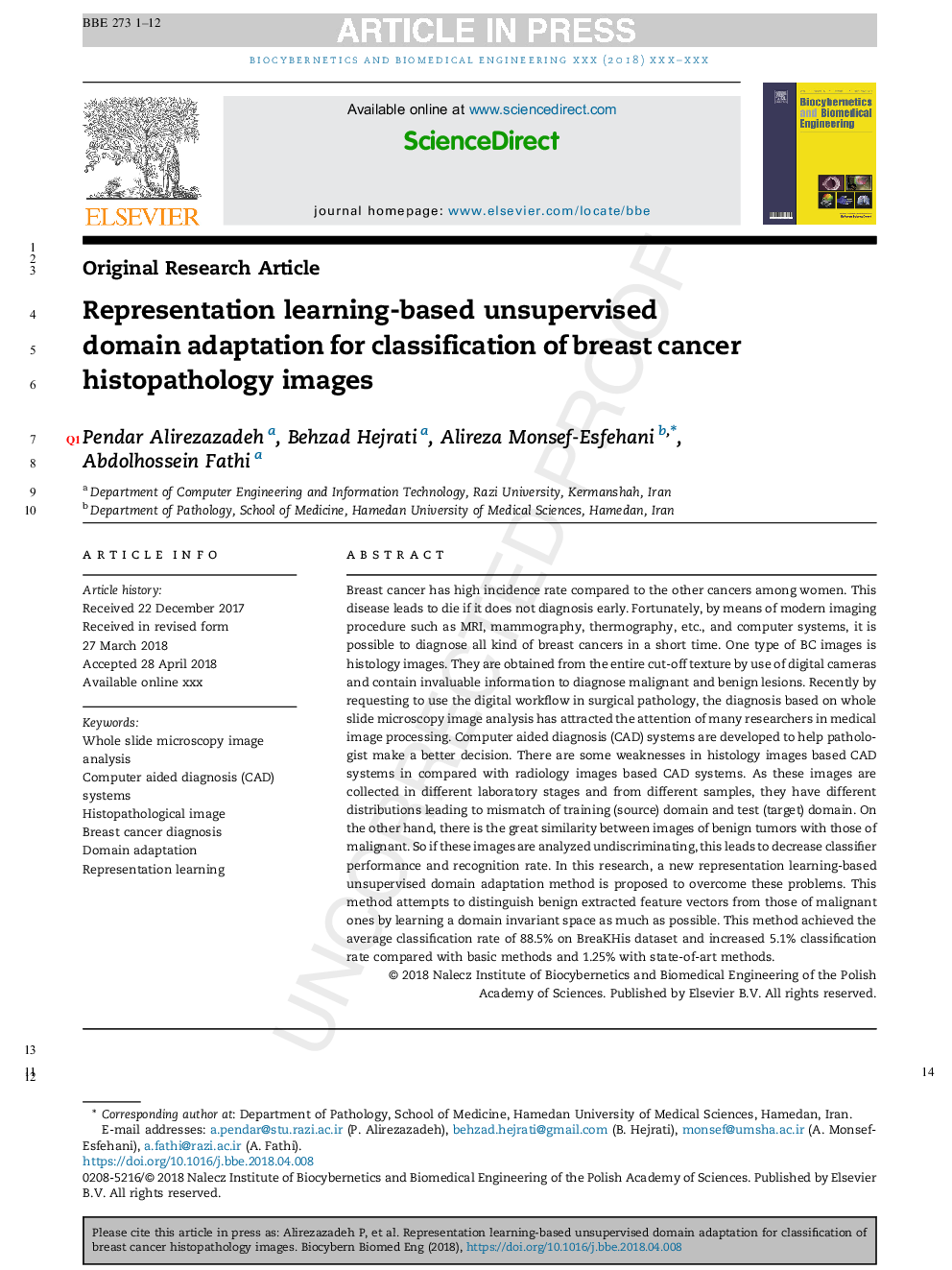| کد مقاله | کد نشریه | سال انتشار | مقاله انگلیسی | نسخه تمام متن |
|---|---|---|---|---|
| 6484148 | 1416072 | 2018 | 12 صفحه PDF | دانلود رایگان |
عنوان انگلیسی مقاله ISI
Representation learning-based unsupervised domain adaptation for classification of breast cancer histopathology images
ترجمه فارسی عنوان
تطبیق دامنه بدون نظارت بر مبنای یادگیری برای طبقه بندی تصاویر هیستوپاتولوژی سرطان پستان
دانلود مقاله + سفارش ترجمه
دانلود مقاله ISI انگلیسی
رایگان برای ایرانیان
کلمات کلیدی
موضوعات مرتبط
مهندسی و علوم پایه
مهندسی شیمی
بیو مهندسی (مهندسی زیستی)
چکیده انگلیسی
Breast cancer has high incidence rate compared to the other cancers among women. This disease leads to die if it does not diagnosis early. Fortunately, by means of modern imaging procedure such as MRI, mammography, thermography, etc., and computer systems, it is possible to diagnose all kind of breast cancers in a short time. One type of BC images is histology images. They are obtained from the entire cut-off texture by use of digital cameras and contain invaluable information to diagnose malignant and benign lesions. Recently by requesting to use the digital workflow in surgical pathology, the diagnosis based on whole slide microscopy image analysis has attracted the attention of many researchers in medical image processing. Computer aided diagnosis (CAD) systems are developed to help pathologist make a better decision. There are some weaknesses in histology images based CAD systems in compared with radiology images based CAD systems. As these images are collected in different laboratory stages and from different samples, they have different distributions leading to mismatch of training (source) domain and test (target) domain. On the other hand, there is the great similarity between images of benign tumors with those of malignant. So if these images are analyzed undiscriminating, this leads to decrease classifier performance and recognition rate. In this research, a new representation learning-based unsupervised domain adaptation method is proposed to overcome these problems. This method attempts to distinguish benign extracted feature vectors from those of malignant ones by learning a domain invariant space as much as possible. This method achieved the average classification rate of 88.5% on BreaKHis dataset and increased 5.1% classification rate compared with basic methods and 1.25% with state-of-art methods.
ناشر
Database: Elsevier - ScienceDirect (ساینس دایرکت)
Journal: Biocybernetics and Biomedical Engineering - Volume 38, Issue 3, 2018, Pages 671-683
Journal: Biocybernetics and Biomedical Engineering - Volume 38, Issue 3, 2018, Pages 671-683
نویسندگان
Pendar Alirezazadeh, Behzad Hejrati, Alireza Monsef-Esfahani, Abdolhossein Fathi,
